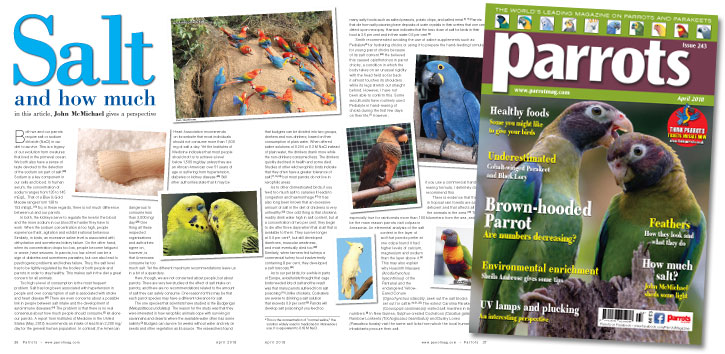
In this article, John McMichael gives a perspective.
Both we and our parrots require salt or sodium chloride (NaCl) in our diet to survive. This is a legacy of our evolution from creatures that lived in the primeval ocean. We both also have a sense of taste devoted to the detection of the sodium ion part of salt. Sodium is a key component in our cells and blood. In human serum, the concentration of sodium ranges from 135 to 145 mEq/L. That of a Blue & Gold Macaw ranges from 138 to 153 mEq/L. So, in these regards, there is not much difference between us and our parrots.
In both, the kidneys serve to regulate the level in the blood and the more sodium in our blood the harder they have to work. When the sodium concentration is too high, people experience thirst, agitation and exhibit irrational behaviour. Similarly, in birds, an excessive saline level is associated with dehydration and sometimes kidney failure. On the other hand, when its concentration drops too low, people become fatigued or worse, have seizures. In parrots, too low a level can be a sign of diabetes and sometimes parasites, but can also lead to psychogenic problems and kidney failure. Thus, the salt level has to be tightly regulated by the bodies of both people and parrots in order to stay healthy. This makes salt in the diet a great concern for all animals.








Parrot Chat
Buyers Guides
Breeding articles